How You’d Survive in The Last of Us, Based On Your Myers-Briggs® Personality Type
In a post-apocalyptic world overrun by infected creatures and scarce resources, how would the Myers-Briggs® personality types fare? Let’s dive into the thrilling and suspenseful scenarios that could unfold if these personalities found themselves in the world of The Last of Us.
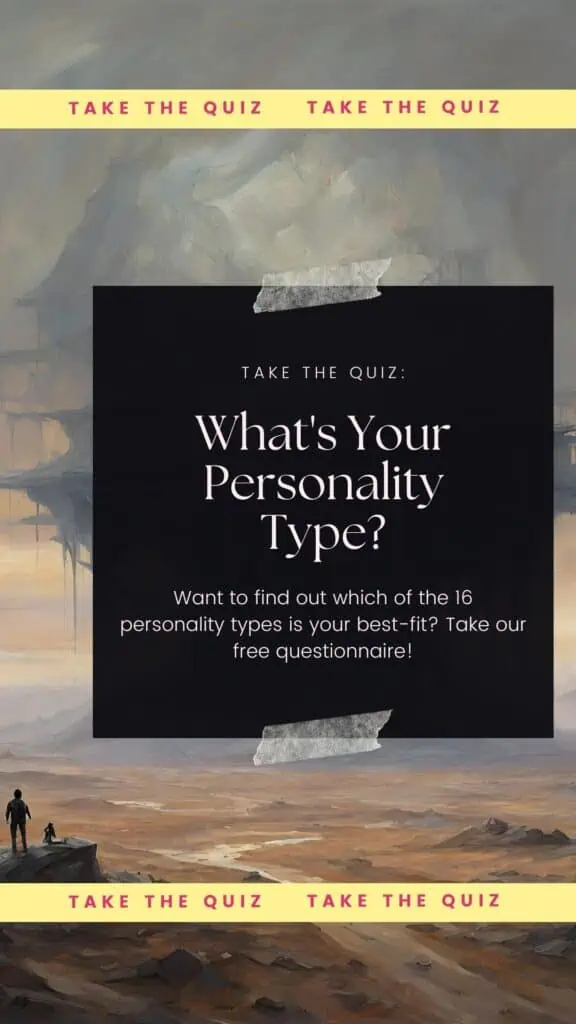
Survival Strategies for Each Personality Type
Estimated reading time: 33 minutes
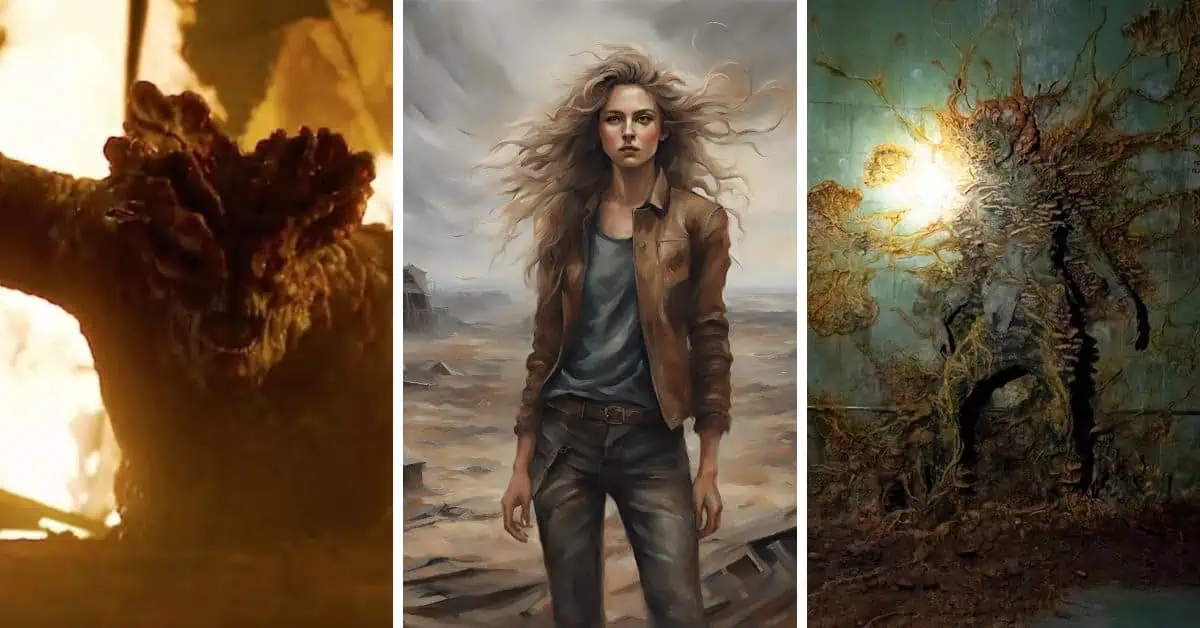
ISTJ: The Detective
The ISTJ, known as ‘The Detective’, approaches survival in The Last of Us with the meticulousness of an architect. With spreadsheets concocted for every contingency, ‘The Detective’ camps inside the ruins of an old Smithsonian museum—because where better to plot the rebirth of civilization than amidst the chronicles of the old world? His practical nature leads to a fortress of rationality and order, lined with canned foods categorized by expiration dates and an armory of well-maintained weapons. Not a single infected could sneak up without tripping an alarm, or worse, getting lectured on the lack of discipline evident in their lopsided gait.
Yet, every night, after triple-checking the barricades, ‘The Detective’ falls prey to his own mind. In the flickering light of a lone candle, he ponders the tragic ‘what ifs’. What if his haven has been silently encircled by hordes of ravenous infected? What if the world never returns to normalcy, rending his beloved routines obsolete? His heart races as he imagines the infrastructure of his sanctuary crumbling under the weight of his catastrophic predictions. He hastily scribbles down potential countermeasures, conjuring scenarios more twisted than the game’s actual plot.
Then comes the morning light, dispelling the phantoms of his imagination, and ‘The Detective’ plunges into his routine with reinvigorated earnestness. Focused and efficient, he forges on, mapping out the city, tagging safe houses, and scavenging supplies. Fellow survivors marvel at his ability to maintain a ledger of resources more accurately than pre-apocalypse banks ever did. His no-nonsense approach makes him a formidable companion—if one can handle the occasional impassioned monologue on the importance of a well-organized inventory.
Yet, despite his stalwart demeanor, the group chuckles at ‘The Detective’s’ secret weapon—a stuffed elephant named Gerald, which he insists is purely for the purpose of bartering but is always seen securely fastened to his backpack. “Just in case,” he mutters, a humorous glimmer of sentimentality among his layers of utilitarian armor. They know better, of course—Gerald is ‘The Detective’s’ silent confidant in a world that so often defies logic, a touch of mirth amidst the meticulousness that keeps them all anchored in the chaos of The Last of Us.
You might also enjoy: How You’d Survive as the Last Person on Earth, Based On Your Myers-Briggs® Personality Type
ISFJ: The Protector
Amidst the ravaged cityscapes, ‘The Protector’ wove empathy and tradition into a survival strategy as comforting as the patchwork quilts they once stitched with patient fingers. With the heart of a guardian and the eye of a hawk, the ISFJ—known fondly to the group as ‘The Protector’—made their shelter in an abandoned floral shop, an oasis of gentility in the midst of chaos. They cultivated a garden of vegetables and medicinal herbs among the withered bouquets, creating a serene hideout that smelled of lavender and hope. But don’t be fooled by the homemade curtains; every pot and pan was cataloged meticulously, doubling as cookware or a defensive weapon at a moment’s notice.
By day, ‘The Protector’ ventured out, shepherding stray survivors back to their floral fortress, a beacon of mercy in the desolate urban wilderness. Donning their signature worn-out but heartwarmingly knitted beanie, they left no stone unturned, rescuing scraps of yarn along with canned goods to maintain the morale-nourishing craft circles. Whispering assurances, they mended wounds and clothes alike, ensuring even their shaky stitches offered strength enough to hold despair at bay. Once, they even talked down a Clicker with nothing more than a soothing lullaby and a freshly baked scone—the latter being somewhat more effective.
Come twilight, the converted shop became the setting for ‘The Protector’s’ famous “apocalyptic potlucks,” where fellow survivors feasted under twinkling lights strung among the rafters—battery-powered, of course. Each guest was greeted with a warm hug and a personalized casserole, because the way to a weary heart is through comfort food crafted with love and a surprising amount of seasoning. Laughter melded with the clink of silverware as tales of near-misses turned into comedic gold in the retelling, all while ‘The Protector’ insisted everyone eat just “one more bite.”
Yet, like the protagonist of an old-world fairy tale, ‘The Protector’ braved the dangers outside their Eden for the greater good, armed with binoculars and a basket of goodies fit for grandmothers and gritty scavengers alike. They dodged spores and bandits with an agility that belied their tender nature, guided by the belief that rebuilding the world meant sowing seeds of kindness. And should the infected breach their peaceful hamlet, ‘The Protector’ stood ready, brandishing their trusty spatula with a battle cry that was half-hearted apology, half-defiant joy. Oh, the monsters would quake—not at their might, but at the allure of their infamous double-chocolate chip cookies, which remained, against all odds, utterly contagious.
Read this next: How You’d Survive in Minecraft, Based On Your Myers-Briggs® Personality Type
INFJ: The Mystic
Within the derelict halls of what was once a majestic library, the INFJ—dubbed ‘The Mystic—crafted a bastion of enlightenment amid the decaying echoes of Austin, Texas. With eyes that perceived the tapestry of the universe, the INFJ found solace in the prophetic scrawls of weathered tomes, their predictions eerie in accuracy. They turned a cavernous reading room into a sanctuary where ivy crept over book-laden shelves, and makeshift chandeliers of bioluminescent fungi cast a gentle glow. Their survival was as much about nourishing the mind as it was about fortifying their refuge; they orchestrated a barter system using esoteric knowledge as currency, delighting in how others underestimated the power wielded by a well-spoken word or an apt proverb.
By day, ‘The Mystic’ wove through the city like a specter, cloaked in a blanket that was equal parts shawl and protective camo, anticipating the movements of the infected with uncanny precision. Their base was a hub for wayward souls seeking direction, each newcomer greeted by a personalized manifesto. It was said that a glimpse of ‘The Mystic’ was as foreboding as it was fortuitous. Among RELICS (Really Eclectic Lads In Catastrophic Scenarios), their survival group, the INFJ held sway with visions painted in allegory—once rallying the crew to relocate their camp with the claim, “Tonight, the stars whisper of a forlorn building, and it has a basement full of Twinkies.” The legend affirms: not a single molarsome snack was left unaccounted.
As dusk fell, ‘The Mystic’ facilitated discussions that were part strategy, part philosophy, often segueing into mirthful musings about whether zombies preferred a classical education. Strategy sessions under the INFJ’s guidance appeared more like ancient symposiums, with poignant metaphors infusing tactics to fend off the infected. The crew often appeared ready for a costume drama, wielding repurposed renaissance fair gear, convinced by the INFJ that nostalgia coupled with pointy ends was a potently undervalued weapon.
When the dead shuffled too close, the INFJ —with a tome in one hand and a uniquely named, artisanal slingshot in the other—stood ready. They named their weapon ‘Foresight’s Folly,’ slinging carefully selected metaphors that left the undead staggeringly contemplative, if not physically harmed. Amid the fray, they would often pause to muse—if the infected still ponder existential quandaries—or merely berate them with unsolicited psychological analysis. They had become a peculiar herald of hope, dispensing absurdity and wisdom in equal measure to keep the frayed threads of humanity intact.
You might also enjoy: Here’s the Harry Potter Character You’d Be, Based On Your Myers-Briggs® Personality Type
INTJ: The Strategist
In the ruins of a crumbled skyscraper, somewhere beyond the grasp of destitution, an INTJ—nicknamed ‘The Strategist’—engineered an empire of efficiency. Isolated high above the world’s wreckage, they mapped out the recovery of civilization like a grand chess game, each move strategically aligned with their vision of the future. With bookshelves reorganized into categories of ‘Useful,’ ‘Currently Useless,’ and ‘Might Blow Up Spectacularly,’ they spent their evenings refining theories on reverse-engineering air fryers into drone networks. Their lair was a precarious balance of reclusive genius and booby-trapped surprises, intended to deter both the infected and the tedious small talk of scavengers alike.
‘The Strategist’ moved through the eerily silent cityscape with a gait that was more predatory calculation than stroll. Their errands were never random; every outing was a precise operation, needing no more than three words of conversation—usually something blunt like “Move,” “Leave,” or, on a particularly chatty day, “Not today, zombie.” Eking out existence on expired protein bars and the occasional contentious vegetable, the INTJ was stubbornly self-reliant. Yet, in an unparalleled show of strategic social networking, they once saved an entire block of survivors by tersely explaining the optimal escape route, punctuated by an exasperated facepalm as if saying, “Must I think of everything?”
As evening crept over the shattered city, the INTJ could be found not by the light of a campfire, but by the soft glow of computer screens and the gentle hum of repurposed servers. Here, bathed in the blue light of their digital dominion, they orchestrated supply raids that were less Mad Max and more sci-fi heist, using drones to relay coordinates and 3-D print weapons. Comedic relief came inadvertently when the drones, nicknamed after pet peeves, relayed sarcastic commentary or played an accidental chorus of Rick Astley’s greatest hits, much to ‘The Strategist’s chagrin.
When danger loomed too close, the INTJ stood ready, armed with inventions that would make Nikola Tesla proud. Indeed, there was nothing quite as fearsome as the Strategist wielding their latest gadget, a contraption that alternated between blasting Beethoven and launching snares. An unexpected side effect? The affected Clickers developed an uncanny elegance and ‘The Strategist’ was left wondering if they’d inadvertently created a new form of interpretive dance. Fierce and unsmiling, their battle cry was a muttered, “Idiots,” yet, somehow, amidst the chaos and flying gadgets, their dry wit became the stuff of legend, inspiring laughter and awe—and sometimes bewilderment—across the makeshift metropolises of the fallen world.
Continue the fun, read: Here’s the Fantasy World You Should Live In, Based On Your Myers-Briggs® Personality Type
ISTP: The Vigilante
As the twilight of humanity crept over the land like a shroud, a lone figure emerged through the haze of desolation with the swagger of Clint Eastwood chewing a toothpick – the ISTP, known in hushed tones as ‘The Vigilante. With a steely gaze honed sharper than an obsidian knife blade, our intrepid survivor was about as solitary as a cactus in a desert, and just as prickly. Agile, nimble, ingenious? Absolutely. Has a good skincare routine? Questionable. The ‘Vigilante’ was the MacGyver of the end times, if MacGyver had an unhealthy obsession with crafting the perfect zombie-proof pants out of duct tape and sheer willpower.
Unlike the other survivors, ‘The Vigilante’s’ interactions were sparing, their words as rare as a full tank of gas. However, when spoken, they carried the weight of a wrench clanging against a car hood in the dead silence. They channeled a disdain for authority into a profound independence, answering to no one save for the pull of their own curiosity and to the chorus of clicks signaling too-close-for-comfort flesh-hungry foes.
One notorious dusk, when the air was thick with the threat of the infected, the ISTP uncovered what would become legend—their showdown with a horde was nothing short of mechanical wizardry. With an intricate system of pulleys and tripwires, they orchestrated a ballet of destruction as stalkers tumbled into traps set with comedic precision, complete with slapstick thuds and cartoonish splats that even the Stooges would envy. Wielding nothing more than a socket wrench and a sarcastic smirk, ‘The Vigilante’ transformed their assailants into unwilling participants in a sideshow spectacle.
By day, the ‘Vigilante’ indulged in the finer things of the post-apocalyptic world—long walks through shambled cities, practicing parkour on dilapidated buildings, and looting every Home Depot with a fervor that could only be described as ‘Titan Black Friday.’ But alas, even lone wolves need hobbies, and competitive water-collecting became ‘The Game’. Rainwater in buckets? Amateur hour. The ‘Vigilante’ constructed a system of funnels leading from the tallest buildings that would make ancient aqueduct engineers feel like they were working with Lincoln Logs. “Got a spare radiator? Great, you’ve just made the scoreboard.” The rules were known only to him, the scores recorded in a secret ledger, and the thrill of victory was his alone.
Yet, the ‘Vigilante’s’ finest hour came not from a clever trap or a mechanical masterpiece but from the most high-stakes competition of all – a staring contest ‘for the ages’ with a lone infected, whose bloodshot eyes bore the weight of existential angst (and possibly a really bad hangover). As the sun set behind the crumbling skyline, they locked eyes—the infected, drooling, the Vigilante, unblinking. Hours passed, the moon rose, a tumbleweed awkwardly bounced past, and then it happened: the zombie blinked. “Guess you’re not ready for the ISTP leagues,” the ‘Vigilante’ quipped, as he calmly turned the zombie into the world’s most unwilling piñata. Yet as he walked away, victorious and alone, one could swear there was a hint of glee in his sigh. Because when the world goes to pot, being the best at anything—even staring—could be a reason to stick around just a little bit longer.
ISFP: The Virtuoso
With the grace of a prowling jaguar and the keen senses of an artist painting life in the midst of decay, our ISFP, dubbed ‘The Virtuoso’, breathed color into the grey wasteland. Clad in leather armor stitched with scraps of flamboyant fabric—a rebellious tapestry against conformity—’The Virtuoso’ wove through the ruins, a silent note in a symphony of chaos. Their weapon of choice: a customized crossbow, lovingly named ‘Heartstring’, that sent arrows whispering death through the air with painterly precision. It wasn’t just about surviving; it was about surviving with style, each shot a testament to their artistry.
The Virtuoso’s inventory was as eclectic as their soul—a medley of homemade smoke bombs crafted from scavenged art supplies, and a trusty, if slightly beat-up, guitar to strum melodies in safer moments. They moved through tense encounters like a melancholic tune, pausing only to sketch fleeting scenes of humanity amidst destruction. There was that time they lulled a Clicker to a standstill with a sorrowful ballad, only to tie it up with guitar strings, leaving it baffled but alive, an act of mercy painting their moral canvas.
Their hideout was a verdant glade amidst desolation, an underground speakeasy where nature rebelled against the apocalypse’s bleakness. Here, ‘The Virtuoso’ would host clandestine gatherings for the few who dared to dream, their fingers dancing over worn frets, crooning songs of lost days. But woe betide the Clicker that stumbled upon this secret recital—the performance broke into an impromptu action sequence, with ‘The Virtuoso’ delivering a heroic guitar smash crescendo, the unfortunate undead’s head the unintended percussion instrument.
Epic tales of The Virtuoso’s exploits ricocheted around campfires, one particular favorite being how they once orchestrated a diversion for pursuing Stalkers using nothing but a wind-up ballerina toy and a series of strategically placed mirrors creating a kaleidoscope of light. With the Stalkers entranced, The Virtuoso slipped away, only pausing to admire their work, a conductor of an operatic escape, leaving their audience of infected in a befuddled, twirling dance. This ISFP’s verdict was clear, their escapades echoed through hollow buildings, leaving behind a message: march to your beat, let not the world’s harrowing cries mute your melody; dance, even when the earth beneath you quakes.
INFP: The Dreamer
In this silent dominion of crumbling facades, an INFP—endearingly known as ‘The Dreamer’—flourished within the echoes of a fractured world. Like a minstrel of hope among the desolate cityscapes, the INFP gave life to the morose streets with a quill plucked from the wings of fallen imagination. They spun stories not just for escapism, but as a fine-spun web ensnaring the raw essence of human emotion, capturing dreams and fears in bottled words. Nestled within the vaulted haven of what was once a grand library, this modern-day bard fashioned a humble abode between aisles of timeless literature, their bed crafted from the worn pages of discarded books, and their desk a mahogany door.
It was during a daring daybreak sortie for ink and parchment—resources as precious as fresh water—that ‘The Dreamer’ inadvertently stumbled upon a slumbering Horde. Yet, where others saw peril, they saw potential. With a sprinkle of wit and whimsy, they began narrating aloud the most epic of dreamscape adventures they could conceive, their voice weaving through the labyrinth of gnarled limbs and infectious groans. So vivid were these tales that the Horde began to sway gently, mesmerized, lost in the grip of dreamlands they had long since forgotten.
Wearing a patchwork cloak of vibrant hues—a patch for each character from their tales—’The Dreamer’ was often mistaken for a lost specter from more colorful days. They were just as likely to leave a trail of laughter-sparked tears as they were to inexplicably vanish when sought after, using their sandy dream dust to craft mirages and slip away unseen. When confronted by a tenacious Clicker, our INFP protagonist conjured not violence, but a mirage of a lush oasis. The Clicker, so used to being blind, was entranced by the illusion, and stumbled into a well-placed booby trap set with the serenity of a zen garden. This allowed the INFP to abscond with nothing but the subtlest of chuckles.
Their most legendary exploit, recited with gusto at the dimmest of campfires, occurred when they twisted the bars of reality to flee from a rather irksome Swarm. In the midst of chaos, they scrambled atop a decrepit bus, wove a heart-tugging narrative of a flying machine powered by pure belief, and to the amazement of friend and foe alike, the bus lurched upwards. It was, of course, merely the timely crumble of the world beneath it, but in that moment ‘The Dreamweaver’ soared – both in body and fable. And as they declared with a twinkle in their eye, “onward to the horizons of tomorrow!” gasps of wonder resonated through the crumbled city, etching a tale of whimsy onto the walls of the world’s end.
You might also enjoy: How You’d Survive (or Not) in a Horror Movie, Based On Your Myers-Briggs® Personality Type
INTP: The Prodigy
In the remnants of a world teetering between the intellectual’s daydream and the pragmatist’s nightmare, an INTP known as ‘The Prodigy’ carved out a realm of reason and research. Their haven, a dilapidated laboratory whose walls were scrawled with equations and theories as cryptic as the Dead Sea Scrolls, stood as a fortress of inquiry amidst the chaos. With a mind that raced faster than the rabid Infected outside, ‘The Prodigy’ embarked on a noble quest—to unravel the mutagenic mysteries of the Cordyceps brain infection and engineer a remedy. They were less like a traditional scientist and more like a chemist wizard, their lab brimming with bizarre concoctions and botanical hybrids that blurred the line between flora and fauna.
One strange day, ‘The Prodigy’ made an unintentionally uproarious discovery—a peculiar fungus that induced uncontrollable fits of laughter in the undead. In their makeshift greenhouse, among beakers and bubbling elixirs, they observed with scientific detachment (and barely concealed merriment) as a captured Clicker stupefied itself, stumbling and guffawing within a cordoned safe zone. ‘The Prodigy’ scribbled notes fervently, their laughter blending with the Clicker’s as they hypothesized applications for such fungal buffoonery. Could the cure to save humanity lie in the untapped potential of jesters in the fungal kingdom? Only time and trial would tell.
However, the life of an INTP ‘Prodigy’ was not without its thrilling escapades. In a tale to be retold with gusto and glee, ‘The Prodigy’ found themselves cornered by a group of cunning Stalkers, eyeing the array of glowing test tubes with perilous curiosity. With a twinkle of wit and a dash of desperation, ‘The Prodigy’ began tossing tubes in an impromptu chemical concerto, transmuting the ground into a phosphorescent dance floor. The Stalkers, enthralled by the luminous show and dizzied by the unexpected disco, twirled and twisted like partygoers under a disco ball, providing ‘The Prodigy’ the perfect chance to escape, leaving the feral audience in a bewildered rumpus.
Undeterred by setbacks and spurred by the endless quest for knowledge, our INTP hero once daringly sought out the legendary ‘Elderflower’—a mythical plant rumored to hold unparalleled medicinal virtues. The journey was nothing short of an odyssey, complete with puzzles of ancient technology and riddles whispered in the wind. When faced with a snarling herd of Runners, ‘The Prodigy’ unveiled their latest gadget—a mechanical contraption that dispersed a cloud of soporific spores. As the infected slumbered, ‘The Prodigy’ tiptoed amidst their tranquil forms, a serene and amusing sight, the epitome of walking through a minefield in ballet slippers. With the Elderflower secured, they bore a mischievous grin, the silent harbinger of a revolution in fungal pharmacology, their infectious humor a relic most precious in their arsenal against despair.
Find out more about INTPs: The INTP In-Depth Profile
ESTP: The Daredevil
In a world ravaged by fungal affliction and society’s subsequent collapse, an ESTP known as ‘The Daredevil’ emerged as a beacon of audacity and ingenuity. With a swagger that seemed to mock the gravity of the dystopian hellscape, ‘The Daredevil’ thrived in the adrenaline-soaked environment like a phoenix reborn in the ashes of chaos. They were a creature of spontaneity, dashing through desolate urban landscapes on a motorcycle cobbled together from the remnants of a bygone era, its engine growling like an indomitable beast challenging the silence of the fallen city.
One harrowing evening, while scouting for supplies in the skeletal remains of a lavish mall, ‘The Daredevil’ encountered a nest of Hunters, ruthless survivors not known for their chivalry. With a crooked grin and a can of spray paint snatched from a decrepit hardware store, ‘The Daredevil’ leapt into action. This impromptu artist painted a trail of counterfeit signs leading to a phantom cache of supplies, luring the Hunters on a wild goose chase that ended in a cul-de-sac laid with burgeoning booby traps. As the traps sprung, ensnaring the duped Hunters, ‘The Daredevil’ strapped on a pair of scavenged inline skates and whizzed past their flustered mark roaring with laughter, the spoils of their ruse held high as a testament to their cunning.
Not long after the humorous escapade, ‘The Daredevil’ found themselves dancing a dangerous ballet atop a crumbling freeway with a horde of the Infected in hot pursuit. Undeterred, ‘The Daredevil’ constructed a makeshift zipline, anchoring it to a fractured overpass. With a commandeered firefighter’s axe and the muscle-memory of a tightrope walker, they sliced through the air, their boldness outshined only by the impromptu pyrotechnics show taking place below—an explosive chain reaction set off by a strategically tossed Molotov cocktail. The sky erupted in brilliant flames, a backdrop fitting for the death-defying escape.
In what would become the stuff of legend, ‘The Daredevil’s’ magnum opus unfolded during a standoff amidst a maelstrom of Infected and hostile human scavengers. Cornered and with resources dwindling, they fashioned a hand-crafted paraglider from a hodgepodge of banners and tarpaulins, declaring, “If I’m going down, I’m going down in style!” In a display of sheer audacity, the ESTP took a leap from the precipice of the city’s tallest makeshift watchtower, catching an updraft and sailing above the chaos, a rogue captain commanding the winds. The scavengers and the Infected below could only gape in awe as ‘The Daredevil’ defied fate itself, casting a silhouette alongside the setting sun, an eternal testament to the indomitable spirit and wry humor that defined the ESTP’s very essence in the twilight of civilization.
ESFP: The Champion
In the remnants of a world torn asunder by the fungal apocalypse, there thrived an ESFP fondly dubbed ‘The Champion.’ With a grin that could light up the gloomiest bunker and an outfit as colorful as their personality, ‘The Champion’ vaulted over the boundaries of despair, bringing warmth and light to the darkest corners of survival. Their magnetic charm was not just for show; it wove the fabric of their community, which, against all odds, burgeoned under their care. ‘The Champion’ didn’t just survive; they made life worth living, orchestrating impromptu dance parties amid ruins and fashioning musical instruments from scavenged junk, proving once again that humanity’s spirit was far from extinct.
One sunny day, that spirit was put to the test when ‘The Champion’ stumbled upon a sequestered library, its silence echoing tales of a bygone world. Amidst the musty stacks, they faced down a clique of Clickers with nothing but their wits and a well-worn copy of Shakespeare’s comedies. By reciting lines in absurd voices and throwing books with precision, ‘The Champion’ had the Clickers twirling in confused circles, enraptured by an impromptu performance. Each Clicker became an accidental actor in the most bizarre play of the century, while the ESFP somersaulted through the stacks, liberating supplies and literature, breathing life into tragedy with the timeless power of comedy.
But it wasn’t all drama and drollery for ‘The Champion.’ During an expedition to gather rare medication, they found themselves face-to-face with a gang of ne’er-do-wells, the sort that had lost their humanity long before the infection took hold. With a disarming smile and an offer of a rigged game of cards, the ESFP engaged the bandits. With every trick up their sleeve and a few cards too, they bluffed their way to triumph, leaving the ruffians scratching their heads over their emptied pockets, oblivious to the sleight of hand that pilfered the keys to their stockpile.
The performance of ‘The Champion’ did more than simply distract the ne’er-do-wells; it inadvertently became a poignant reminder of their lost humanity. As the card game drew to a close, and the bandits realized their defeat, ‘The Champion’ addressed them with an earnest sincerity that had been absent from their interactions. They spoke of the world that once was—of camaraderie and shared victories, of sympathies, and hearts not yet hardened by the harshness of their reality. Through tales of before the fall and the spark of hope still alive within ‘The Champion’s’ vibrant eyes, they elicited from the bandits a reflection upon the people they once were, appealing to a camaraderie that the struggle for survival had long since buried. It was a gentle prod towards redemption, a subtle encouragement to reclaim the decency and cooperation that could once again raise them from mere survival to a life imbued with meaning and connection. It was an open invitation to be not just survivors, but champions of a humanity awaiting rebirth.
ENTP: The Trailblazer
In the midst of the cacophony of ruin, the ENTP known as ‘The Trailblazer’ brought a flicker of innovation to the end-of-days tableau. Where others saw collapse, the Trailblazer saw a playground for creativity. So when they stumbled upon an old, rusted amusement park, a lightbulb flickered to life above their head, not even needing a working electrical circuit. Their laughter pierced the silent, eerie stillness as they set to work, repurposing the carousel’s gears and the roller coaster’s rails. As the sun dipped below the horizon, a horde of Infected were drawn to the park by the cacophonous sound of ‘The Hall of the Mountain King’ playing on a jury-rigged pipe organ, The Trailblazer’s first piece de resistance.
The evening took a surreal turn when the Infected, lured by the discordant melody, found themselves part of a macabre carnival. As they raced into the park, ‘The Trailblazer’ unleashed their pièce de résistance—a reconstructed bumper car arena where the vehicles had been transformed into electrified chariots. The ENTP sped around, emitting cackles and zapping Fungal Fiends left and right. It was a spectacle so absurd that even the grim reality of the apocalypse paused to appreciate the bizarre joyride. Yet, in true Trailblazer fashion, the amusement park was more than a killing ground; it was a prototype for a new world where laughter and innovation trumped dread and destruction.
The ENTP’s vision extended far beyond mere entertainment. The roller coaster, a towering relic from a time of thrill-seekers and carefree screams, became their grand project. Methodically, ‘The Trailblazer’ re-engineered it into an ingenious contraption that epitomized the union of form and function. Each car was connected to a complex system of pulleys and gears that, when activated, would haul essential supplies from the depths of the park to their safe haven high above. The roller coaster, once an instrument of leisure, was now a lifeline, a symbol of adaptation and ingenuity.
But for ‘The Trailblazer’, this contraption was more than a logistics solution; it was a metaphor for their philosophy. Amid the wreckage of society, they realized that survival was not about clinging to the vestiges of the past, but about reimagining the remnants into something new, something valuable for the future. The roller coaster, now a beacon of hope, illustrated how the greatest innovations come not from what is lost but from the novel ways we forge ahead. This was ‘The Trailblazer’s magnum opus, a testament to their belief that even at the end of the world, humanity’s greatest asset is its unyielding drive to create anew.
You might also enjoy: How You’d Survive on a Deserted Island, Based On Your Myers-Briggs® Personality Type
ENFP: The Visionary
In the fractured remnants of civilization, with danger lurking in every shadow, an ENFP known as ‘The Visionary’ carved out their niche in the zombie-ravaged hinterlands. Clad in a patchwork ensemble of vibrant scarves and solar-powered fairy lights, they navigated this somber world with an infectious fervor for life and a relentless belief in the goodness of humankind—or what was left of it. As spontaneous as the shifting winds, ‘The Visionary’ would often be found gazing wistfully at the stars through a makeshift kaleidoscope, whispering encouragement to anyone who would listen—alive, undead, or simply undecided.
Their lair, an artfully disarrayed bookshop-turned-sanctuary, housed not only the ENFP but also a communal tapestry of scarred survivors and lost souls. Inside these hallowed walls, littered with tomes of poetry, dog-eared philosophy books, and faded maps of the before-times, plans were hatched for a brighter tomorrow. Illuminated by the soft luminescence of LED lanterns—which somehow never seemed to run out of power—’The Visionary’ orchestrated discussions that spun strands of hope into plans for reconstruction, and their infectious laughter echoed, warming the spirit of those who had forgotten the sound.
Beneath this unassuming leader’s charm, however, lay a diplomatic mastermind, as if their whimsical exterior was a clever ruse to disguise the acuity of their survival instinct. It was not uncommon to witness ‘The Visionary’ in full throttle, negotiating alliances with rival factions or bartering for seeds and supplies with a panache that even the most skilled diplomats of old would admire. When confronted with encroaching dangers, they employed their most unusual weapon: the power of distraction through unexpected bursts of song, confusing the less-intelligent foes long enough for their band of survivors to retreat to safety.
But it wasn’t just their knack for diplomacy or their role as the heart of the sanctuary that left a mark on those around them; it was ‘The Visionary’s’ capacity for inspiration that truly defined them. Amidst a backdrop of ruin, they scrawled murals of flourishing landscapes and inscribed visions of unity and rebirth on every surface, their paint-stained fingers weaving color into a monochrome world. They reignited innocence with scavenger hunts for cloud shapes and laughs that rippled through silent streets like a promise. Their pure, unwavering zest for life was a herald to all that even in darkness, the human spirit could find a palette with which to paint its resilience.
Find out more about ENFPs: A Look at the ENFP Leader
ESTJ: The Captain
Now we meet our ESTJ, aptly named ‘The Captain,’ who would power-walk through the ashen downfall of civilization like they were leading a brisk mall-walking group at 6 A.M. on a Tuesday. They didn’t just survive the zombie apocalypse; they managed it with the attitude of someone who color-codes their disaster prep gear and has a clipboard for every occasion. While others fumbled with sentimentality, ‘The Captain’ drew up action plans and to-do lists as if singlehandedly rebooting society—zombie hordes be darned.
In this grim new world, ‘The Captain’ saw no time for tears or for long heart-to-heart bonding moments over tinned beans. Instead, they woke survivors up at the crack of dawn (because even without Wi-Fi, somehow their internal alarm was reliable) to get cracking on fortifying their stronghold—a repurposed Costco, because where else can you simultaneously grab a lifetime supply of canned corn and build a fortress? Their morning briefings were legendary: “You, Bob, fix the fence. If I see one more slack-jawed zombie strolling in here because you’ve been dilly-dallying, I’m deducting it from your share of the survival biscuits.”
Amidst the chaos, ‘The Captain’ ran drills like they were prepping for the most intense game of laser tag the world has ever seen. They had no time for zombie-induced histrionics; when a new recruit froze in fear, ‘The Captain’ slapped them with a cold fish they’d found in the seafood section (because even slaps need to be rationed). Their motivational speeches were about as warm and fuzzy as a cactus: “You’re afraid of zombies? Well, lucky for you, my disappointment is scarier. Now load up your crossbows, and let’s teach those brain-chewing window-lickers the meaning of private property!”
Perhaps ‘The Captain’s’ finest moment came during what would later be known as ‘The Great Siege of ’23’—a time when a frenzied swarm of zombies had more coordination than the local flash mob trying to recreate ‘Thriller.’ ‘The Captain’, with a megaphone stolen from an abandoned police car, directed their motley crew with the precision of a drill sergeant with a caffeine overdose. Wielding a spork as if Excalibur itself (look, you use what you’ve got), they thrust and parried, shouting instructions so out-of-pocket, the alive could barely keep it together, let alone the undead: “Aim for the head, you muppets! What are you doing—trying to tickle them to redeath?!”
You might also enjoy: The 16 Myers-Briggs® Personality Types On a Camping Trip
ESFJ: The Defender
In the midst of the cacophony of what used to be civilization after someone decided to accidentally press the ‘Zombie Apocalypse Now’ button, there arose an ESFJ, affectionately dubbed ‘The Defender’. Picture a host of a teatime radio show, adept at doling out practical advice with a lighthearted quip—now give that host a nail-studded baseball bat and a knapsack full of Band-Aids and casseroles. ‘The Defender’ had this uncanny knack of turning hide-outs into cozy bastions of pre-apocalypse nostalgia. “Carol, love that zombie-proof barricade, but let’s hang some curtains. We’re not animals, after all.”
Armed with the optimism only an ESFJ can wield in the face of imminent brain chomping, ‘The Defender’ arranged potluck dinners with whatever canned goods could be found—because what better way to pass the time than discussing who brought the best baked beans and which flavor of Gatorade pairs best with canned pears? They even managed to organize a book club among survivors, because nothing says “we’re going to survive this if it kills us” like analyzing Pride and Prejudice for its post-apocalyptic themes.
Now, let’s talk zoning governance. Under ‘The Defender’s’ watchful eye, their stronghold—a charmingly converted Target department store, where else?—became a patchwork quilt of strategically placed herb gardens and bolted bookcases. Their filing system for tools could make a librarian weep with joy: Hammers in Aisle 3, next to the self-help books because let’s face it, if you’re going to rebuild society, it’s a good idea to get to grips with your inner child, right? And then, ‘The Defender’ introduced “Morale-boosting Mondays,” where everyone was gently but firmly encouraged to share their ‘Survivor Highs of the Week’. Spoiler alert: Finding canned peaches ranked suspiciously high every time.
But the pièce de résistance? ‘The Defender’s’ legendary ‘Self-Care Sundays’, complete with face masks made from clay found in the abandoned art store, and online yoga classes via a pre-recorded DVD. “Breathe in serenity, exhale zombie risk.” They’d murmur, as they gently coaxed even the most skeptical of survivors into downward dog. And all at once, the world seemed a little less terrifying—a little more worthy of defending.
ENTJ: The Director
Meet ‘The Director,’ the ENTJ, striding onto the ravaged scene of The Last of Us like they were stepping into a high-powered board meeting, armed with a battle plan that Sun Tzu would envy and a swagger that would make Tony Stark take notes. Straightaway, ‘The Director’ set their sights on the biggest, baddest safehouse on the block—the kind of place that screams “I have an indoor pool and a contingency plan.”
Now, ‘The Director’ didn’t just bark orders like an irate soccer coach. Oh no, they were the embodiment of strategy; their mind was a constantly updating chess game, and they played to win. When others saw broken roads, ‘The Director’ visualized supply lines. When others stumbled upon a zombie, they saw a training opportunity —or at the very least, a chance to practice their golf swing.
Picture this: The Director standing amidst the chaos, clutching an iPad still miraculously charged, showing graphs of zombie traffic patterns and refuge resource allocations. “People, our ROI here is Surviving, and we’re currently underperforming in the staying-alive sector!”
Under The Director’s rule, survival wasn’t an accident; it was a KPI. Crafting a crossbow became an exercise in efficiency engineering. Scavenging runs were optimized for max loot-to-risk ratio, color-coded routes included. And by the way, team-building exercises? Mandatory. Because nothing bonded a group more than successfully executing a flank maneuver on a Clicker ambush.
Let’s not forget their shining moment — when, in the face of a bloater onslaught, ‘The Director’ MacGyvered a makeshift bazooka out of a leaf blower, three cans of hairspray, and the heart of a PS4 console. “Innovate or die,” they shouted, cobbling it together while offering a rousing lecture on the importance of disruptive thinking in post-apocalyptic times.
Their stronghold? Not just a fortress, but a well-oiled machine of progress. Thanks to their draconian but wildly effective policies, you could bet your last roll of duct tape that every blade of kudzu was weaponized, and if you didn’t know Morse code? Well, consider yourself non-essential.
And there they stood, overlooking their domain, bolstering morale with quips dripped in sarcasm: “If we run out of food, we’ll start with the pessimists first. It’s okay, they won’t mind. They already think they’re doomed!” And as the sun set on another day wrested from the clutches of doom, The Director could be seen, plotting, planning, preparing. Because in this world of fungi and fury, they didn’t just adapt. They directed.
Discover more about ENTJs: 24 Signs That You’re an ENTJ, the Director Personality Type
ENFJ: The Mentor
Once upon a bleaker-than-bleak world, there stood (or crouched tactically behind a derelict coffee shop) an ENFJ, known as ‘The Mentor. Think Morpheus with a dash of Charles Xavier, and the heart of Tanjiro Kamado—our survival-savvy protagonist was an odd blend of visionary, guru, and zombie-escape artist. “Gather ’round, as I tell ye of the path forward,” he’d begin, voice rich with gravitas and a wee bit of audacity. His group of bedraggled survivors hung on every word because, let’s face it, when you’ve mastered the art of making motivational speeches over the groans of the undead, you’re a leader worth following. ‘The Mentor’ had plans to bind humanity with the unshakeable cords of empathy – or at least, keep them from getting munched on in a less-than-dignified manner.
Despite the world going to pot, the ENFJ kept his cool under pressure like an illegal street racer with a penchant for philosophy. He had this otherworldly ability to see the ‘bigger picture’, which often included maps of the city cryptically sketched in soy milk on reclaimed Starbucks countertops. “To rise above, we must reflect inward,” he’d say, teaching the art of ‘Zombie Zen’. It was all about understanding the infected: their groans were not of hunger but of a hollow yearning for community—or maybe it was just gas. Regardless, ‘The Mentor’ led his disciples with a supernatural calmness, channeling his inner Samuel L. Jackson: “When you are finished looking inward, get these motherflippin’ zombies off my motherflippin’ plane of existence!” His inspirational quips were not merely uplifting but essential, like avocado toast at a millennial’s brunch.
In the midst of this post-apocalyptic kerfuffle, ‘The Mentor’ uncovered what he believed to be the Rosetta Stone of zombielingual studies: an actual Rosetta Stone language course titled “Conversational Groans”. With the air of Gandalf opening the gates of Moria, he declared, “With this, we shall bridge the divide!” The ENFJ embarked on the ambitious project of teaching the group how to ‘speak zombie’, convinced that peace lay in the empathic communication of, “Urrrghh… Aaaargh…” The group was skeptical until one day, an actual infected wandered in, and one brave soul stepped forward. “Uggh… Rrrgh?” It asked. “Aaargh, Uhhhh,” responded the trainee. The zombie paused, evidently moved, and strolled away, leaving everyone’s jaws agape. A single tear rolled down ‘The Mentor’s cheek. “Empathy,” he wept, “will save us all.”
But let’s be real – this isn’t a tale simply of touchy-feely wins and tree-hugging (mainly because hugging trees in these times could mean surprise biting). The ENFJ knew that actions spoke louder than groans, so he suited up in the most badass, leather-duster-trench-coat one could find in a dystopia (bonus points because it was in the ‘lost and found’ at a bowling alley). Amidst the gritty chaos, ‘The Mentor’ became a beacon of hope—and style. With inspirational speeches that would put Braveheart to shame, an arsenal of re-purposed bowling balls (because why not?), and the conviction that he could, somehow, unite all surviving souls—’The Mentor’ stood tall. He wasn’t just surviving, he was leading a revival – while still never forgetting to moisturize amidst the mayhem, because dry skin is where he drew the line.
You might also like: What Each Myers-Briggs® Personality Type is Thinking About On an Airplane
What Do You Think?
In the face of danger and uncertainty, each Myers-Briggs personality type brings their own set of strengths and challenges to the table. Whether it’s the visionary ENFP brightening the group’s spirits or the vigilant ISTJ keeping an eye on resources, the dynamics between these types in The Last of Us world would undoubtedly be epic, hilarious, and perhaps even unexpected. But what do you think? Share your insights, thoughts, and experiences in the comments below!
Disclaimer: This blog post is intended for entertainment purposes only. It is not a scientific analysis of personality types or a reflection of real-world survival skills.
Discover more about your personality type in our eBooks, Discovering You: Unlocking the Power of Personality Type, The INFJ – Understanding the Mystic, The INTJ – Understanding the Strategist, and The INFP – Understanding the Dreamer. You can also connect with me via Facebook, Instagram, or Twitter!
Subscribe to Our Newsletter

Want to discover more about personality type? Get the inside scoop with Susan Storm on all things typological, along with special subscriber freebies, and discounts on new eBooks and courses! Join our newsletter today!


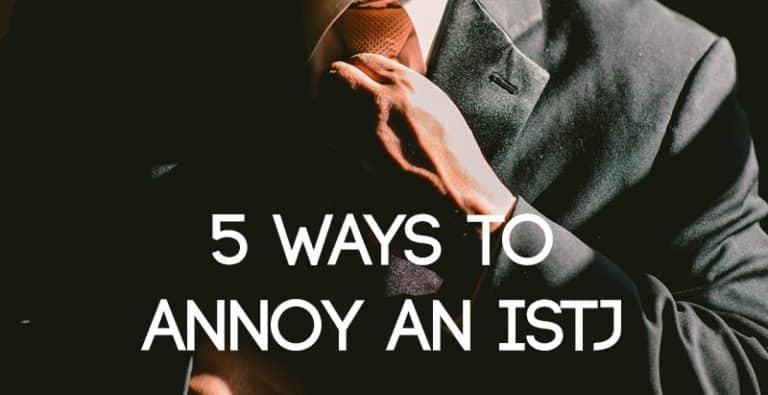
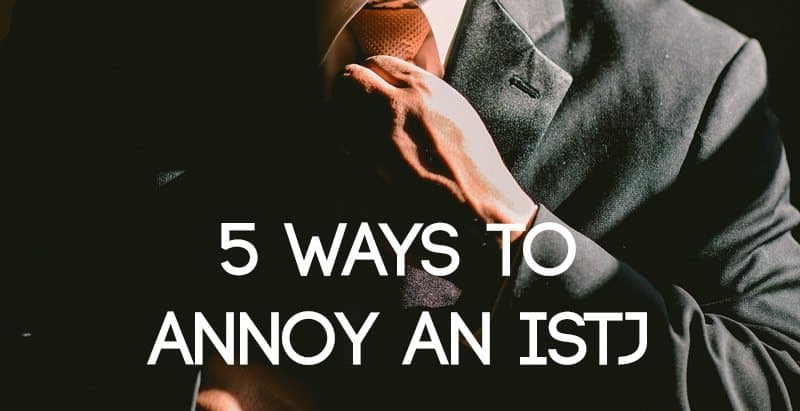
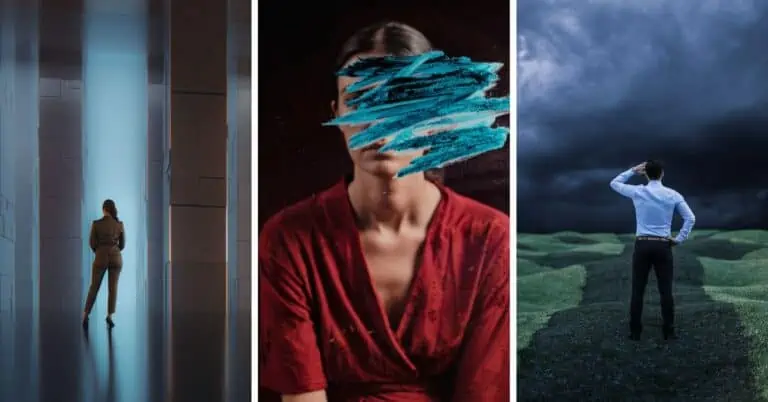
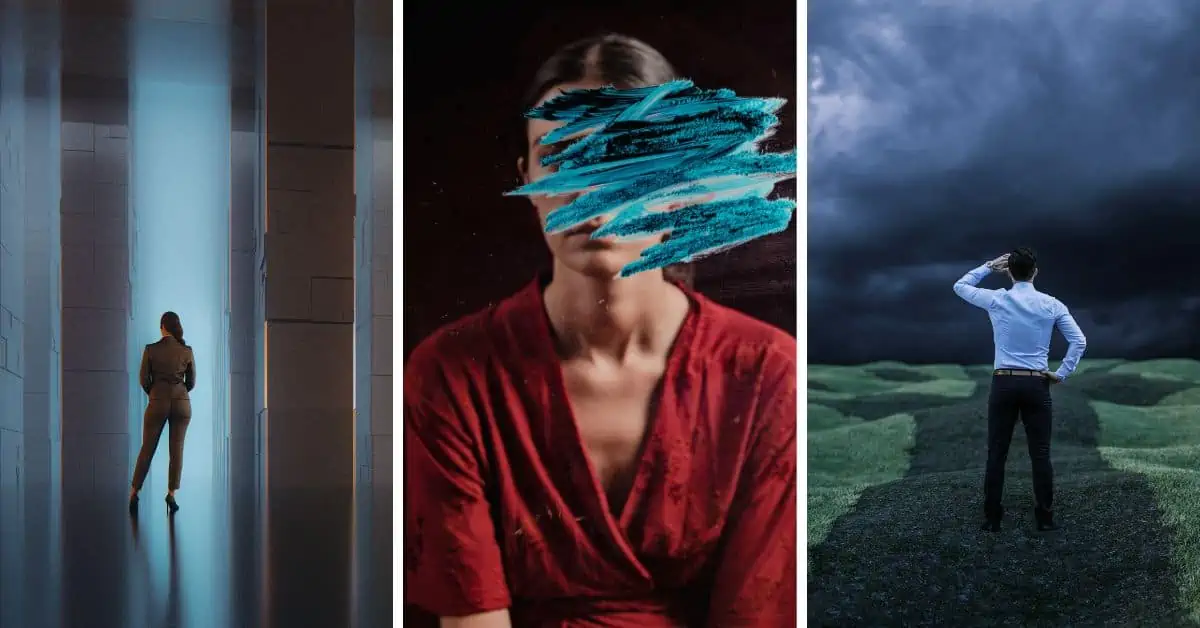



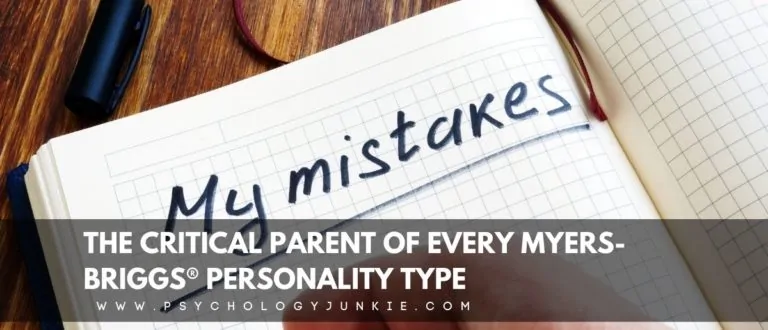
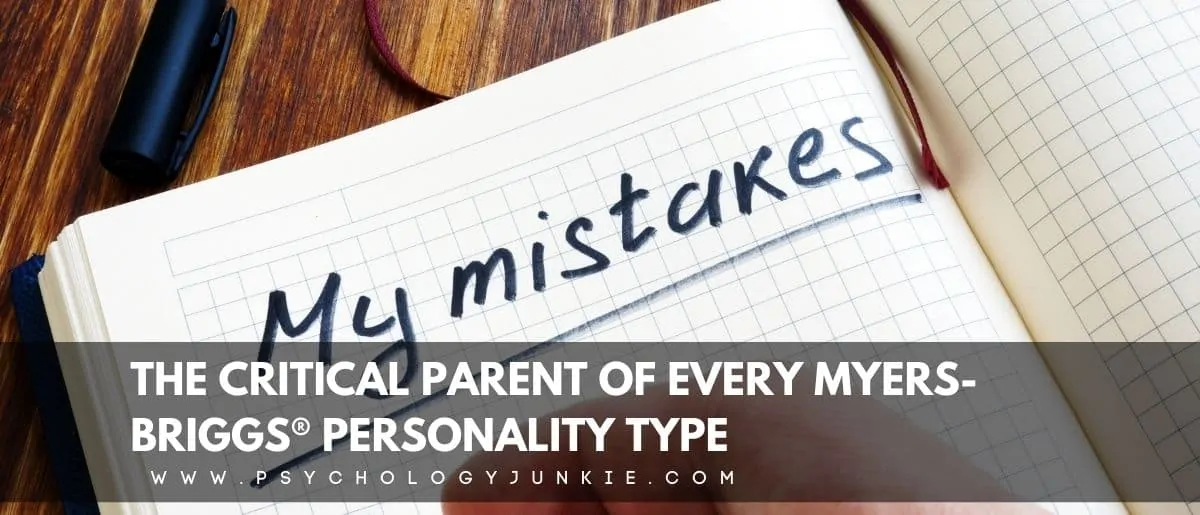


Isn’t the correct naming for INTP ‘Logician’ rather than ‘Prodigy’?
That’s the name that 16personalities.com has chosen for INTP, the name for my site for INTP is Prodigy 🙂